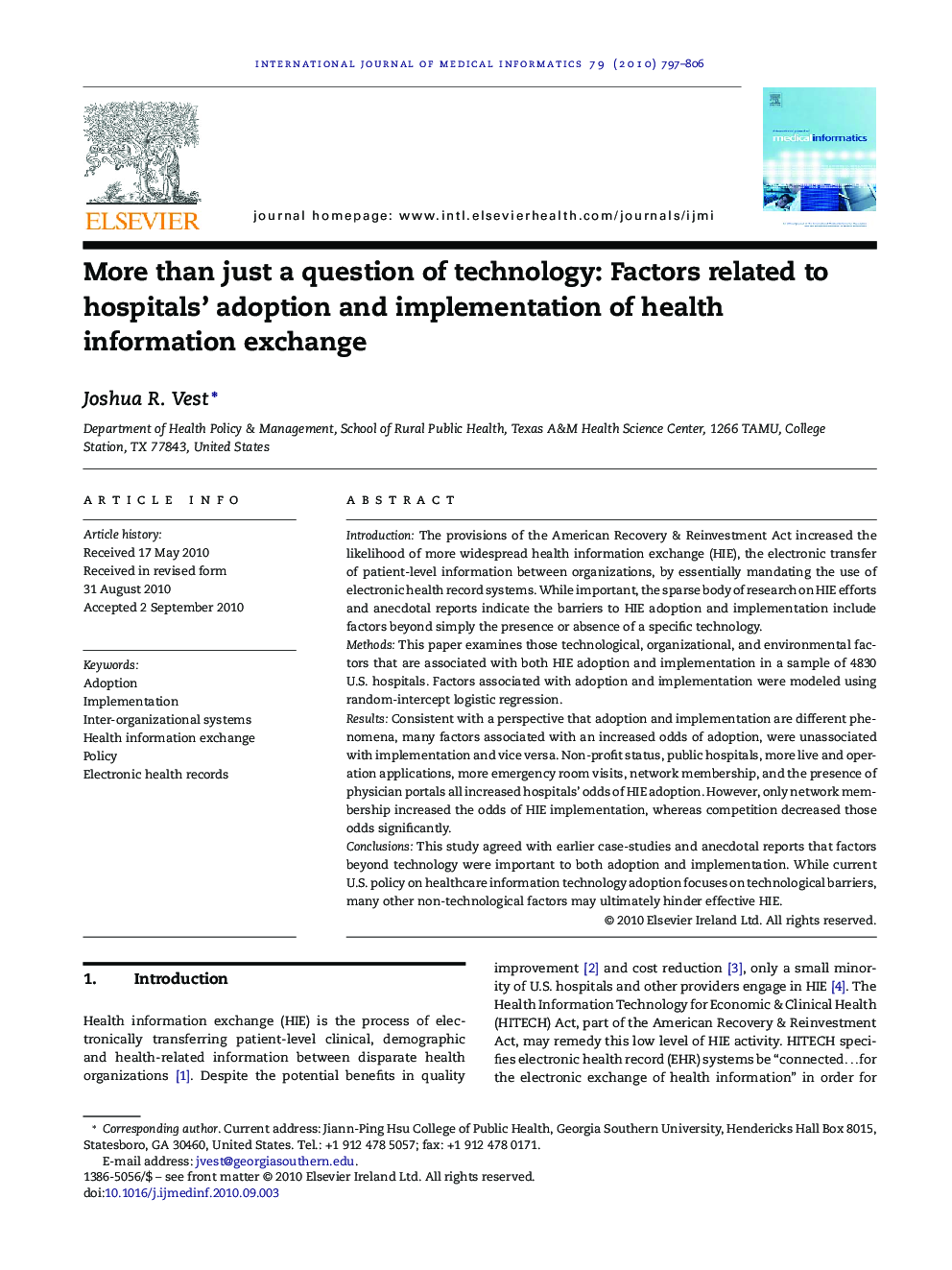| کد مقاله | کد نشریه | سال انتشار | مقاله انگلیسی | نسخه تمام متن |
|---|---|---|---|---|
| 516307 | 1449164 | 2010 | 10 صفحه PDF | دانلود رایگان |

IntroductionThe provisions of the American Recovery & Reinvestment Act increased the likelihood of more widespread health information exchange (HIE), the electronic transfer of patient-level information between organizations, by essentially mandating the use of electronic health record systems. While important, the sparse body of research on HIE efforts and anecdotal reports indicate the barriers to HIE adoption and implementation include factors beyond simply the presence or absence of a specific technology.MethodsThis paper examines those technological, organizational, and environmental factors that are associated with both HIE adoption and implementation in a sample of 4830 U.S. hospitals. Factors associated with adoption and implementation were modeled using random-intercept logistic regression.ResultsConsistent with a perspective that adoption and implementation are different phenomena, many factors associated with an increased odds of adoption, were unassociated with implementation and vice versa. Non-profit status, public hospitals, more live and operation applications, more emergency room visits, network membership, and the presence of physician portals all increased hospitals’ odds of HIE adoption. However, only network membership increased the odds of HIE implementation, whereas competition decreased those odds significantly.ConclusionsThis study agreed with earlier case-studies and anecdotal reports that factors beyond technology were important to both adoption and implementation. While current U.S. policy on healthcare information technology adoption focuses on technological barriers, many other non-technological factors may ultimately hinder effective HIE.
Journal: International Journal of Medical Informatics - Volume 79, Issue 12, December 2010, Pages 797–806